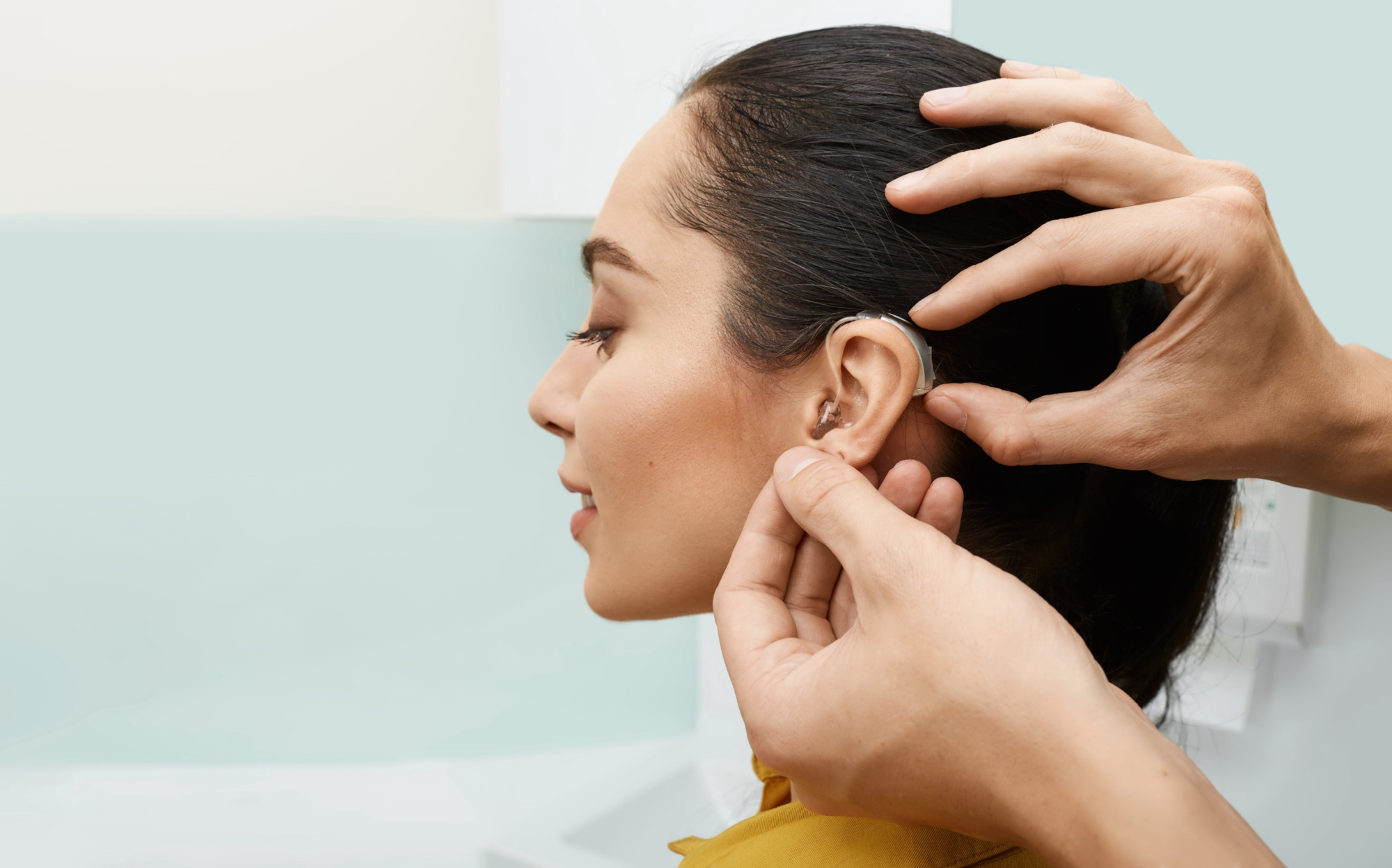Sensorineural hearing loss, or SNHL, occurs from damage in your inner ear. It happens due to illness, injury, or sudden exposure, but can also develop gradually via aging. In some cases, it even begins at birth.
SNHL causes you to perceive loud noises as muffled and may make you able to hear quiet noises at all. This occurs because tiny receptors in your inner ear called hair cells are damaged. These transform sound waves into signals that your brain interprets as sound.
In most cases, SNHL is an irreversible condition because these cells are unable to repair themselves. However, wearing hearing devices, such as hearing aids, can effectively improve your condition.
Types of Sensorineural Hearing Loss:
Depending on how it affects the ears, there are several types of sensorineural hearing loss.
Bilateral refers to the situation in which both ears are affected, whereas unilateral affects only one ear.
Symmetrical SNHL is when hearing loss is similar in both ears, while asymmetrical SNHL explains differing levels in each ear.
Lastly, SNHL can be progressive, meaning it worsens over time, or suddenly occurring immediately.
It is important to diagnose your hearing condition to ensure that you receive proper treatment.
How Common is Sensorineural Hearing Loss?
Sensorineural Hearing Loss is one of the most common types of hearing loss in adults. It typically develops between the ages of 50-70.
Sudden sensorineural hearing loss occurs abruptly or develops within a few days.
What are the Common Causes of SNHL?
SNHL is caused due to damage in your inner ear. Specifically, tiny hair cells in the cochlea or the vestibulocochlear nerve become damaged or are destroyed.
In some cases, SNHL occurs during the aging process. This happens because as you age, there is a degeneration of hair cells, loss of hair fibers, and changes in the blood supply, which all work together to essentially perceive and process sound.
Another common cause is noise exposure. When the inner ear is exposed to intense, loud sounds you may experience some form of hearing loss.
Chronic exposure is when your ear is repeatedly exposed to loud sounds, such as machinery, power tools, concerts, or loud music through headphones. This is more of a long-term process that gradually wears down your ear cells over time.
Acute exposure is a sudden process that occurs when a singular sound, such as a gunshot or explosion, causes severe and immediate hearing damage.
In some cases, SNHL is a genetic factor that results from mutations or abnormalities in genes that affect the development, structure, or function of your auditory system. This form of hearing loss can begin at birth or develop later in life.
Genetic hearing loss can affect either one or both ears, depending on the situation. It can be stable or progressive, meaning that it can essentially worsen over time.
Head trauma and injuries can damage the delicate structures of the inner ear or the auditory nerve, leading to SNHL.
Certain infections, such as mumps, measles, meningitis, or even severe ear infections, can spread to the inner ear and cause permanent damage to the hair cells or auditory nerve.
Meniere’s Disease is a disorder of the inner ear that can lead to permanent sensorineural hearing loss over time.
Acoustic Neuroma is a non-cancerous tumor that grows on the nerve leading from the inner ear to the brain. As it grows, it can put pressure on the hearing and balance nerves, leading to SNHL.
What are the Common Symptoms of SNHL?
- Difficulty detecting high-pitched sounds or voices
- Struggling to hear clearly in noisy settings
- Speech often sounds unclear or mumbled
- A persistent ringing in the ears (tinnitus)
- Challenges keeping up with conversations
- Sounds may seem faint or muffled
Risk Factors Associated with SNHL:
- Aging
- Intense noise exposure
- Use of ototoxic medications (chemotherapy, specific antibiotics)
- Genetics
- Smoking and cardiovascular disease
Preventing SNHL
Some causes of sensorineural hearing loss are unavoidable, however, there are several preventable ways to reduce your risk. One of the most important ways is to limit your exposure to loud, consistent noise. Using earplugs in noisy environments and keeping headphones at a lower volume will greatly decrease your risk.
Adults over the age of 50, and anyone high-risk, should have regular hearing screenings- every 1 to 2 years. Detecting SNHL early helps regulate hearing changes before they worsen.
Managing chronic health conditions is another important preventative. Diabetes, high blood pressure, and high cholesterol are all considerable factors for early detection. These conditions can affect blood flow to the inner ear, resulting in hearing loss.
Certain ototoxic medications can be harmful to the inner ear. Be cautious of certain antibiotics, and chemotherapy agents. If you are prescribed these medications, be sure to discuss the side effects of hearing loss with your doctor.
How is Sensorineural Hearing Loss Treated?
- Hearing aids- wearing these devices amplifies sound to make speech easier to hear. These are commonly used for mild to moderate SNHL.
- Cochlear implants- these surgically implanted devices bypass damage in your inner ear structures to stimulate the auditory nerve. These are used for more severe SNHL.
- Bone-anchored hearing aids (BAHA)- these surgically implanted devices send sounds to the inner ear through vibrations. BAHA is used for single-sided hearing loss.
- Medications- In some cases, corticosteroids may be prescribed to reduce inflammation and possibly restore some hearing if started early. This is typically used if SNHL is caused by inflammation or disease.
Sources
https://my.clevelandclinic.org/health/diseases/sensorineural-hearing-loss
https://www.enthealth.org/conditions/sensorineural-hearing-loss/


